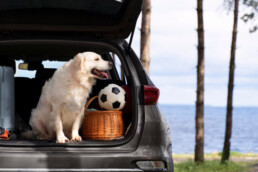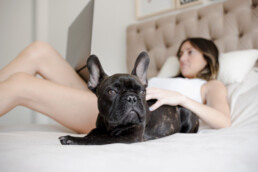The fundamentals for educating your dog
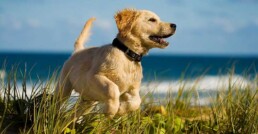
Educating your pet is fundamental, because it allows you to have with him the best possible relationship, avoiding any problems of coexistence. Education is very important because it ensures that our four-legged friend will be able to have social and nonhazardous relationships with others and with strangers.
The need to train a dog, indeed, arises from the fact that being a descendant of the wolf, he has a strong character, which means that he always tends to be the leader within a group. This behavior is found in large size animals, who could even be dangerous if not trained properly. Therefore the education of the dog is a useful and essential gesture not only for the welfare of our family.
The training of your dog, will not be easy and quick. The education requires a lot of time and dedication, as the animal will have to trust first his educator to start learning the offered teaching. It is a gradual process, achieved through short sessions. Too heavy activity might, indeed, annoy the animal, who could oppose and rebel against his educator
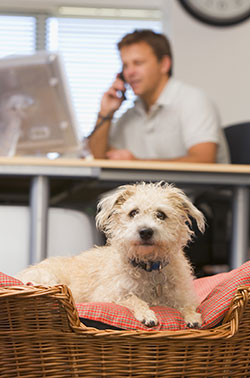
What not to do
You should never mistreat your dog, because this behavior could frighten or annoy the animal, making him refractory to the teachings.
We suggest, therefore, to reward the animal for each correct and right attitude: the prize (which may consist, for example, in a biscuit for dogs) is a positive reinforcement to encourage the same correct behavior.
When to start training?
The education of the dog should start from his early age, to be sure that any character weaknesses may be modified or at least smoothed.
Educating a puppy can be, of course, more difficult if he has a stronger and more active nature and problems in focusing on a given activity. On the other hand, at this age, character and nature are not defined and it is still possible to change possible complex behavioral sides.
The general rules for education are:
sessions must never be too long or heavy;
freedom for the animal to rest and rewards for each correct behavior. It is clear that with puppies you will have to be more docile and gentle.
If you think you don’t have the time or skills to properly educate your dog, you should contact schools for dog training. You should get in touch to trusted and known persons, suggested perhaps by your vet. For a purebred animal, there are centers which are specialized in the education of his specific breed.
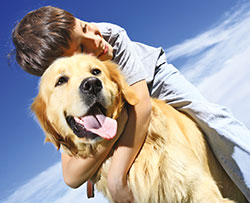
Nature’s aspect
No dog is equal to another dog, even within the same breed. There are several temperamental features that the trainer must know.
Here below you can find the more important ones, remembering that each of them may be present in greater or smaller measure thus making the training easier or harder.
Character profiles
Temperament
it is the reaction speed of the dog to the external positive or negative stimulus. The greater the reaction to incentives is, the better is the temperament.
Character
it is the dog’s ability to stand the external unpleasant incentives, both physical and phychological. It may happen – unintentionally – that the subject is pounded on a paw, if he reacts crying, moving away from the man and showing to remember the episode with fear, he will have a very weak character. If he reacts trying to bite or biting the feet of the man he will have a very determined character. Good value is in the middle.
Docility
E’ la naturale disponibilità del cane ad accettare spontaneamente l’uomo come suo superiore senza che si debba ricorrere a interventi repressivi nei suoi confronti.
Vigilance
it is the natural dog’s availability to voluntarily accept man as superior, without having to take a repressive action against him.
Aggressiveness
it is the ability to see quickly and promptly potential hazards or odd situations which could threaten the dog, the owner or his property.
Pugnacity
it is the step that follows the previous one, and represents the ability to react acquiring an attitude of struggle.
Curiosity
as for all animals, including humans, it is considered as the natural interest that dog shows to events and stimuli which normally occur and that affect the olfactory, visual and auditory senses.
Sociability
it is the ability to fit simply, naturally and spontaneously in the human environment.
Possessiveness
it is the interest manifested by the dog owning any object, such as a game, a bone, etc….
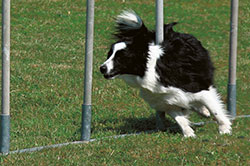
Canine psychology
Every dog is different, depending on his breed with its behavioral patterns, on the stimuli that he receives from the surroundings, from his experiences, from the people that take care of him. Even within the same litter subjects with very different nature can be seen (dominant, submissive, enterprising, investigative, fearful, etc…). This diversification leads to different educational methods and therefore it is not recommended the “do it yourself training” because it could “ruin” the nature of the dog and even compromise the foundations for success. On the other hand some annoying habits (such as pulling on the leash, not rushing quickly to the call…) do not allow you to enjoy the company of a well – educated dog with whom you have established the right understanding, so it becomes necessary to appeal to a specialized training centre.
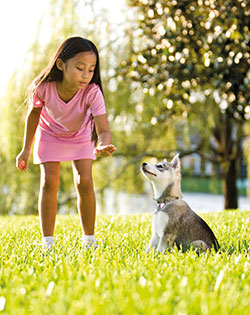
The main rules
orders, whatever language you choose, must be fixed
every word must match the performance of a determined exercise. For example, if you choose English, you cannot sometimes say, to call him: “ come” and others “here” or “come here”;.
every order, must be pronounced clearly and especially it does not have to be repeated
The trainer’s task will be to teach you the most appropriate method to obtain a prompt response, depending on the subject. An order repeated several times would lead to the following results:
- Lo stress for you and your dog;
- The bad habit of an exhausting chant for the execution of each exercise;
- Loss of respect in you, as a “leader of the pack”.
Never arbitrarily speed times giving new orders to the dog, if this is not advised by your trainer.
The trainer has no interest in prolonging the time of your lessons, as the compensation covers the whole course, therefore everything in the right time.
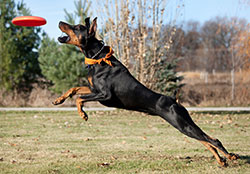
Training
The training should not be considered an affectation, but a gift that the owner makes him in order to allow him to fit well in the family and to have a good social life. Before starting the training it is important to be familiar with your dog, learn his rhythms and respect his fragilities. Try to take advantage during the moments of game because puppies really like to play and they learn easily. Do not stress them and reward them when they show some improvements.
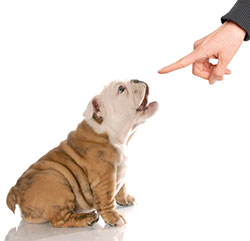
For an optimal learning, we recommend you to follow the following tips:
The name
The first thing to do, without any doubt, is teaching him his name, and it is not as easy as it seems. It is important to give him a short name because he will memorize it easier and it is equally important to call him with his name from the beginning. When he responds reward him with a cuddle! Do not shout or raise your voice, you will scare him.
Bravo
usually followed by some strokes, it must follow every positive response or every well – executed command by your dog. The dog loves to please his human “leader” and he will be extremely gratified by a “bravo” uttered with a lot of enthusiasm. Only in special cases, this world is to be used quietly.
No!
puppy must learn quickly the meaning of the word “no” and it must be associated to the various prohibitions that you must impose him. You must be firm and resolute because he will associate this prohibition to the tone of your voice.
Piede o fuss
It is used generally in the conduct (with or without a leash), indicates that the dog must put his shoulder to the height of the leader’s leg, neither more forwards nor more backward, nor too distant and he must keep this position.
Pee and poop
It is a crucial point of the education of your puppy. It’s important that he learns to do his needs in the place that you have chosen for that purpose. You must bring him out frequently and at least after every meal. Sometimes you can understand that the time is coming, just watching him. When he starts going around it means that he is ready to do it. So just say “no” and bring him out. It’s important to praise and stroke him every time he obeys.
Sit o sitz
it is the first command that you have to teach to your puppy. Every time you give this command to him, place one hand on the dog’s kidneys and take a little pressure to make him understand what you want him to do. When he sits praise and pet him.
On the ground or platz
it is the second order that you have to teach him; start with making him sit, then lie next to him and make him understand that he must put himself in the same position pulling his front legs forward. When he reaches this position, brush him and praise him.
Stay or bleib
it is the third command for him to learn. Make the puppy sit and complete the order with “stay”, say “no” if he moves, and repeat “stay”. Issue the command and move away gradually, praising and brushing him when you get his obedience.
The leash
try to make him associate the leash with the fun of the walk. The first thing to do is to naturalize the dog to wear the collar and let him walk in the courtyard. Then try to make him walk on a leash, letting him take the position at your side and start walking trying to keep the leash softly, if the dogs begins to pull, give a slight but determined hit on the leash and say “no“. When you stop make him sit and give him a stoke;
Come or komm
even the easy recall with which we want that your dog reaches you is an important step for his education. Begin to associate it with the meal time, then slowly, call him with his name and say “here” let him understand that you want him by your side, giving him great emotional importance;
Front
the dog must sit in front of the conductor, as close as possibile to him;
Jump or hop
the dog must learn to jump on command. This exercise is useful also to liven up the lesson to your dog and give him fluency in the movement.
Loneliness
even if he doesn’t have to be alone on lots of occasions, it is important that you prepare your puppy for this possibility, so that he doesn’t feel abandoned and has no fear when it happens. In the early times stay away from him for some minutes, then go back, making him understand that even if you leave him alone, this is not forever. Later slowly extend this period until he gets used to it. Every time you come back remember to pet him.
The meal
give him 3 meals per day until he is 6 months old, then you can switch to 2, strictly observing the same schedule, the same bowl, same place. In this way you will make him get used to this routine. Leave him a bowl of fresh water at every meal and especially do not give him foods that come from your table, because they will harm his health.
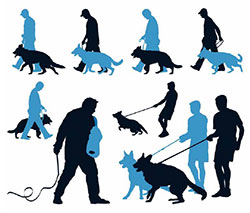
Regarding the “corrective tearing”, if it is given in the correct way, it attracts the attention of the dog, making him desist from what he was doing wrong. Practically this means a sharp, fast and curt tug followed by an immediate loosening of the leash. Contrary to what you might think, it, besides the fact that it does not cause any pain, is much less harmful than a uniform tension that could cause serious damage to the dog trachea and moreover instead of representing a correction, it will encourage the dog to repeat this behavior. After the tearing it is important to give him some new orders followed by rewards (such as “Bravo” or brush).
Share
Related posts
Holiday with 4-leggend friends
What measures should you take to plan a top holiday with your…
Can we pass the stress on to our dog?
According to a study conducted by Linköping University in…
